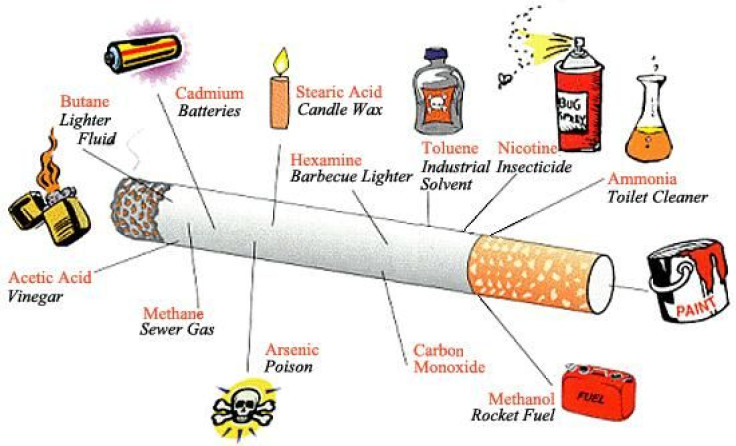What Is In A Cigarette? Chemicals and Ingredient List Confirm How Dangerous Smoking Really Is

Over 3,200 Americans under the age of 18 smoke their first cigarette every day, and most of them are unaware of what they are getting into. Many new smokers may not realize how quickly their new habit can lead to heart disease, stroke, diabetes, lung diseases, and certain types of cancer. If you’re looking for an explanation as to why cigarette smoke results in more than 480,000 deaths each year in the United States, look no further than its ingredients. The average cigarette contains upward of 600 different ingredients on top of over 7,000 chemicals produced by cigarette smoke. Where these ingredients and chemicals also show up may shock some smokers into quitting once and for all.
“One of the issues with cigarettes is that they have hundreds of added ingredients, not just what is naturally in the tobacco plant,” environmental health scientist with Mount Sinai School of Medicine, Dr. Luz Claudio told Medical Daily in an email. “What complicates this even more is that when these chemicals burn, they form other chemicals that may have additional effects on health.”
While tobacco companies like R.J. Reynolds insist that a lot of the ingredients found in cigarettes are also found in Food and Drug Administration-approved foods and beverages, a few of these ingredients are also found in products that you would never think to put in your body otherwise. Take for example arsenic, an inorganic substance found in wood preservatives and rat poison. On the FDA’s Established List of Harmful and Potentially Harmful Constituents in Tobacco Products and Tobacco Smoke, arsenic’s dangers include: carcinogen, cardiovascular toxicant, and reproductive or developmental toxicant.
Some of cigarettes' harmful ingredients and chemicals are more familiar, such as carbon monoxide, which can be found in car exhaust fumes, and nicotine, also found in insecticides. There’s also formaldehyde, a cancer-causing ingredient of embalming fluid. Others may not seem so dangerous by name alone like cadmium, an active ingredient in batteries, or hexamine, sometimes found in barbecue lighters. Approximately 70 of the chemicals and ingredients found in a cigarette are considered carcinogenic, meaning they have the potential to cause cancer. Almost all of these ingredients can lead to death in some way or another.
“Cigarette smoke can affect the flow of oxygen within our bodies in two ways,” pulmonologist specializing in pulmonary rehab with City of Hope, Dr. Brian Tiep told Medical Daily. “First, carbon monoxide grabs on to the hemoglobin molecule, which prevents the transport of oxygen through red blood cells. Secondly, cyanide hinders tissue’s ability to take up and utilize oxygen. Tissue cannot function without this steady flow of oxygen.”
According to the American Cancer Society, cigarette smoke accounts for at least 30 percent of all cancer-related deaths in the U.S. This includes 87 percent of lung cancer deaths among men and 70 percent of among women. Cigarette smoke can also lead to certain lung diseases including emphysema, bronchitis, and chronic airway obstruction. There are currently more than 16 million Americans suffering from a disease that was caused by smoking. If appropriate prevention strategies are not put in place to curb the number of young Americans who pick up smoking, an estimated 5.4 million people under the age of 18 will die prematurely due to a smoking-related illness.



























